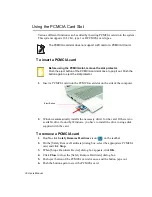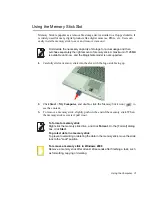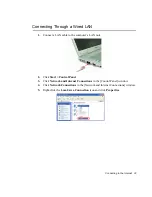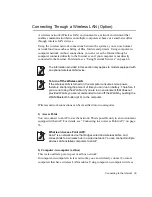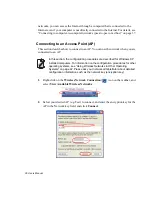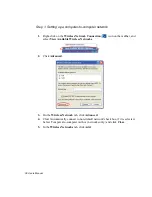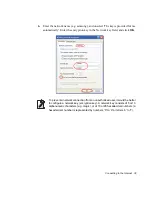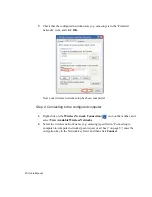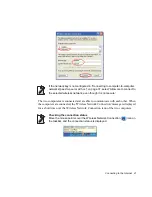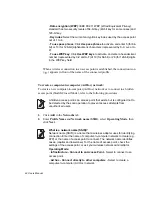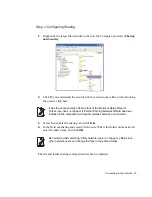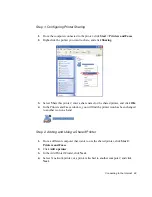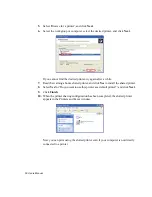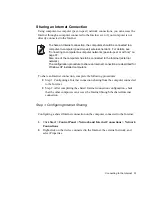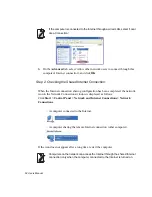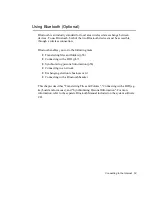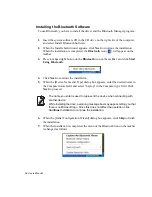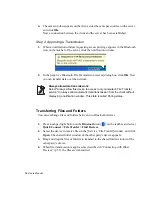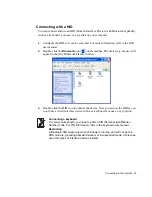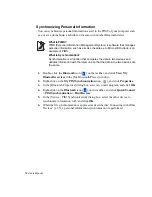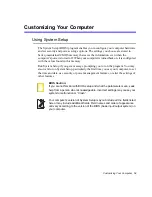
44 Users Manual
-
Data encryption (WEP)
: IEEE 802.11 WEP (Wired Equivalent Privacy)
standard has two security levels of 64-bit key (40-bit key for some cases) and
128-bit key.
-
Key index
: Select the current encryption key index used by the access point
out of 1 to 4.
-
To use pass phrase
: Click
Use pass phrase
to activate, and enter 5 (for 64-
bit) or 13 (for 128-bit) alphanumeric characters (represented by 0-9, a-z, or A-
Z).
-
To use WEP key
: Click
Use WEP keys
to activate, and enter a hexadecimal
number (represented by 0-9 and A-F) of 10 (for 64-bit) or 26 (for 128-bit) digits
in the WEP key field.
When a wireless connection to an access point is established, the connection icon
(
) appears in front of the name of the connected profile.
To create a computer-to-computer (Ad Hoc) network:
To create a new computer-to-computer (Ad Hoc) network or to connect to a hidden
access point (Stealth/Closed Mode), refer to the following procedures.
A hidden access point is an access point that exists, but is configured not to
be detected by the scan operation to prevent access attempts from
unauthorized users.
1.
Click
Add
in the
Networks
tab.
2.
Enter
Profile Name
and
Network name (SSID)
, select
Operating Mode
, then
click
Next
.
What is a network name (SSID)?
Network name (SSID) is a name that a wireless adapter uses for identifying
connection. Enter the name of computer-to-computer network to create (e.g.,
P2P) or the name of access point to connect. The network name identifies
cases. (capital and lowercase) For the name of access point, check the
settings of the access point, or ask your wireless network administrator.
Operating Mode:
−
Infrastructure - Connect to an Access Point
- Select to connect to an
access point.
−
Ad hoc - Connect directly to other computers
- Select to create a
computer-to-computer (Ad Hoc) network.

